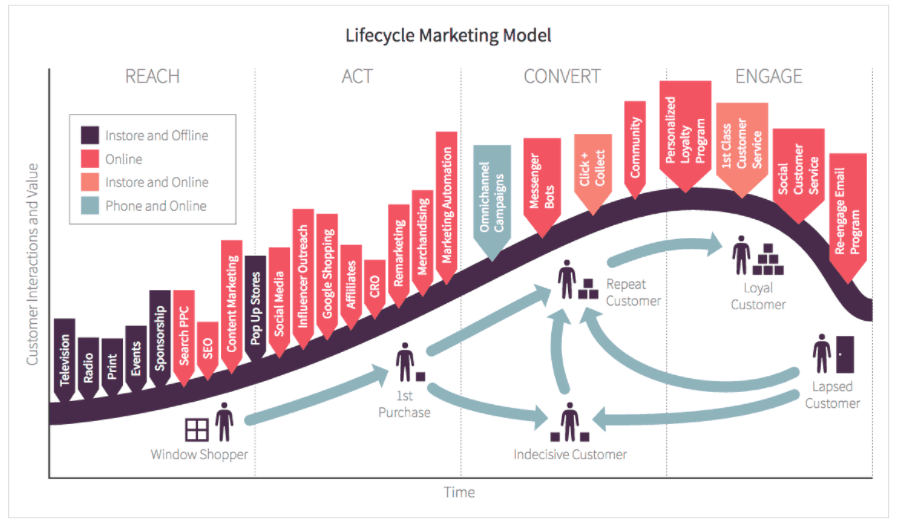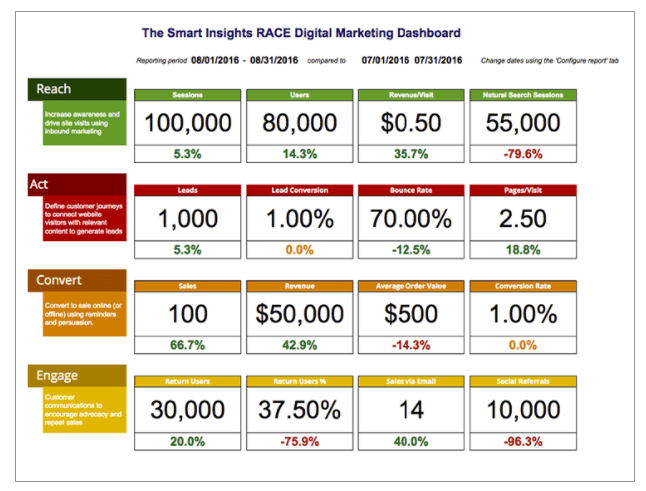Make sure you aren't making any of these costly ecommerce marketing mistakes
Competition is fierce in the ecommerce sector, so to get an edge, you need a planned approach, with clear priorities and a relentless approach to optimisation.
It’s likely Ecommerce Marketing is already a massive investment in your business and this will only grow in future as you look to compete. Creating a robust multichannel marketing strategy that balances your business goals with your available resources can be difficult to achieve, but when you succeed, the benefits are immense.
Over the last 20 years as we have consulted and trained with many Ecommerce businesses and we have seen many different mistakes which hinder growth. Yet there are some common mistakes we see often, which we have summarised here so you can compare against your approaches.
Strategy Recommendation: Plan, Manage, Optimise!
This is our mantra at Smart Insights and it is shared by many of the leading Ecommerce businesses which have a long-term roadmap, carefully orchestrated campaigns, the right toolset to build great experiences and use data-driven optimisation to stay ahead.
Maybe you aren’t making any of their mistakes and that would be great to hear! However, if you see yourself in any of these scenarios, following our advice will help you to change for the better before it’s too late. We go into detail about each mistake and how it can be avoided in our 10 common ecommerce mistakes guide which all Smart Insights members can access now. The top 10 mistakes we identified are:
1. No Goals for Growth or Roadmap
Shockingly, nearly half of businesses do not have a digital marketing strategy, but they are doing digital marketing. Perhaps this is not surprising since we also found that 44% of businesses didn’t have a marketing strategy to align their digital strategy with.
2. Not having a content marketing plan
The importance of content to commercial success online is ever increasing. As marketers, we love the potential of Content marketing. Not only is it a great way to communicate with your audience but when you get it right, it fuels and integrates many of the inbound marketing techniques like SEO, Social Media marketing, Lead Generation and email nurture campaigns.
3. Not knowing your customers
If you haven’t researched your customers or created personas, you won’t know what they want, which sites and technologies they use, or why they came to your website or store. By having the right insight into your customer’s needs, you can tailor your content (marketing messages/product descriptions) to your audience in a way that is relevant to them. To do this you should create personas of your 3-5 ideal customers.
4. No clear value proposition or OVP
Research published in Nature shows that on average a potential customer will spend 0.2 milliseconds on your site on your site before deciding that they will stay or leave and the most important tool to keep them is your value proposition.
Your value proposition and OVP is your promise/commitment to deliver specific benefits, solve their problems and tells the customer why they should buy from you. Without it your competitors are only a ‘Google’ away.
5. Not following the 70-20-10 rule for your digital media investments
The ecommerce industry is constantly evolving and the ways you can drive traffic to your websites are ever expanding, particularly through AdWords and social media. Competition for budget is tough and managing the budget is even tougher. Do you give more budget to advertising via Paid Search and Social Ads or invest in SEO & CRO? The biggest mistakes you can make is not investing in the channels that drive the most value to your business. Failing to innovate and depriving new channels of investment is also an easy mistake to make, and one that can be avoided by employing the 70:20:10 model.
6. Having an SEO strategy without understanding your competitors
Competitor research is a core part of Search Engine Optimization and involves studying websites that rank well for keyphrase targets. While it is common to consider which keyphrases you should target and prioritise, it is less common to research competitors in detail. We believe this approach Is vital since each keyphrase and industry can be vastly different in terms of what elevates a website to the top of the search results. While for one search term it could be down to high quality inbound links, for another the page content & technical structure.
7. Not using Retargeting to bring customers back to your site
So, you’re following the latest lifecycle marketing techniques and you’ve done everything right to get a potential customer to your site, but they leave without purchasing, this could be for various reasons, from them being in the research phase of the buying process to receiving a Whatsapp from a friend. If you’re not taking advantage of remarketing to bring people back, you are missing out on a massive opportunity.
8. Running your website without a structured CRO program
Why aren’t more businesses working on Conversion Rate Optimisation? The Smart Insights-TFM Managing Digital Marketing research suggests that the majority of businesses have limited or intermittent optimization. There is an ‘elite’ group of optimizers with a programme of frequent structured tests or continuous optimization of mobile or desktop experiences, but they are the exception, accounting for less than 20% of all respondents.
9. Optimizing the Customer lifecycle without a Multichannel Approach
Customer Lifecycle Marketing for ecommerce businesses with bricks and mortar stores involves a huge number of touch points across the customer journey. For you to service your customers’ needs your need to utilise a range of both online and offline strategies. We have developed an ecommerce lifecycle marketing model to help you identify any gaps in your marketing plan.

10. Not paying attention to the math
With the range of insights services available and the complexity of today’s ‘Martech stacks’ there is a danger we fall foul of ‘analysis paralysis'- where we have vast amounts of data but have no idea what it is telling us.
So, to help marketers understand the big picture we recommend you complete a regular weekly or monthly review of the current effectiveness of their digital marketing using Google Analytics with Google Docs Spreadsheets we have created the RACE Digital Dashboard. We use this combination ourselves drilling down into more detailed channel dashboards in our monthly reporting!

Download Expert Member resource – 76161
This guide steps you through the 10 most common and costly ecommerce mistakes, and what you can do to avoid them.
Access the 12 common e-commerce marketing mistakes









